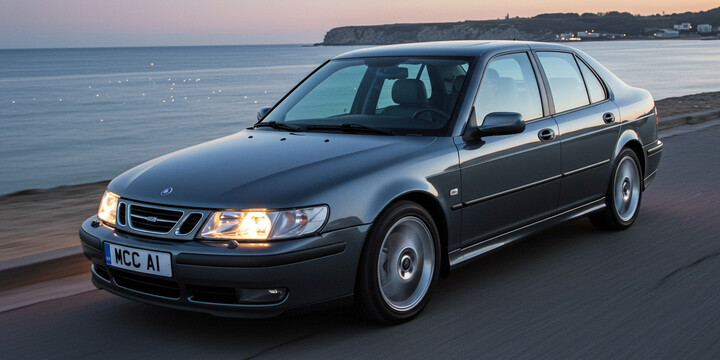
SAAB 9-3 (2002-07) 4DR SALOON 2.0T 175 LINEAR AUTO
The SAAB 9-3 (2002-07) 4DR SALOON 2.0T 175 LINEAR AUTO is a stylish and practical executive saloon that offers a distinctive alternative in the used car market. Known for its sleek design, solid build quality, and comfortable ride, this model is well-suited for families, commuters, or anyone who values a refined driving experience. Its turbocharged 2.0-litre engine delivers a good balance of performance and efficiency, making it an ideal car for daily journeys or longer trips. With features focused on safety and comfort, the SAAB 9-3 has been favored by drivers who appreciate Scandinavian design and reliability, standing out in the competitive saloon segment.
In the used car landscape, the SAAB 9-3 (2002-07) 4DR SALOON 2.0T 175 LINEAR AUTO is often valued around £671 in private sales, with typical mileage close to 96,852 miles, reflecting its practicality and durability over time. It generally appeals to those seeking a dependable, stylish vehicle with a touch of premium feel and unique character. Compared to rivals, the SAAB 9-3 often earns praise for its handling and distinctive design, making it a popular choice among drivers looking for a reliable saloon with a bit of European flair. Whether you're a first-time buyer or upgrading from an older model, this car offers a compelling mix of style, comfort, and value that makes it worth considering.

average use

The latest mileage data for the Saab 9-3 (2002-07) 4-door saloon 2.0T 175 Linear Auto models shows a fairly even distribution across four ranges. Each mileage bracket—50,000 to 60,000 miles, 80,000 to 90,000 miles, 90,000 to 100,000 miles, and 120,000 to 130,000 miles—accounts for 25% of the recent recordings. This suggests that there is no predominant mileage level currently recorded for this vehicle type, indicating a varied usage pattern among the vehicles in the sample.

vehicle values

The data indicates that the entire private sale market for the SAAB 9-3 (2002-07) 4DR SALOON 2.0T 175 LINEAR AUTO is concentrated at a price point of up to £1,000, with 100% of the valuations falling within this range. This suggests that the vehicle is primarily valued very low in the private sale market, likely reflecting its age, condition, or market demand for this specific model. There are no valuations listed beyond the £1,000 mark, indicating limited higher-value private sale activity for this car.

production years

The data indicates that within the sample of SAAB 9-3 models from 2002 to 2007, the majority of vehicles manufactured in 2004 account for 75%, with the remaining 25% produced in 2005. Notably, the data does not include information on vehicles from 2002, 2003, 2006, or 2007, which could suggest lower availability or fewer vehicles from those years in the sample. Overall, this points to a higher prevalence of SAAB 9-3s from 2004, potentially reflecting production or market trends during that period.

colour popularity

The data indicates that the most common main paint colour for the Saab 9-3 (2002-07) 4DR Saloon 2.0T 175 Linear Auto is Silver, accounting for half of the sample at 50%. Green and Black are less prevalent, each representing 25% of the vehicles. This suggests that Silver is the predominant choice among owners, with a notable minority opting for Green and Black.

ownership cycle

The data indicates that the majority of 'SAAB 9-3 (2002-07) 4DR SALOON 2.0T 175 LINEAR AUTO' vehicles in the sample have been registered with four keepers, accounting for 75%. A smaller portion, 25%, have had seven registered keepers. This suggests that most vehicles of this model tend to stay with a relatively small number of owners, with a notable minority experiencing more frequent ownership changes.

engine choices

The data indicates that for the Saab 9-3 (2002-07) 4-door saloon 2.0T 175 Linear Auto model, the engine capacity information is somewhat limited but shows that 75% of the vehicles have an engine capacity of 1990 cc, while 25% have a capacity of 2000 cc. Notably, all vehicles in this sample use petrol as their primary fuel type. This suggests a predominantly petrol-powered lineup with most models fitted with approximately 2.0-litre engines, though a quarter have slightly larger 2000 cc engines.












